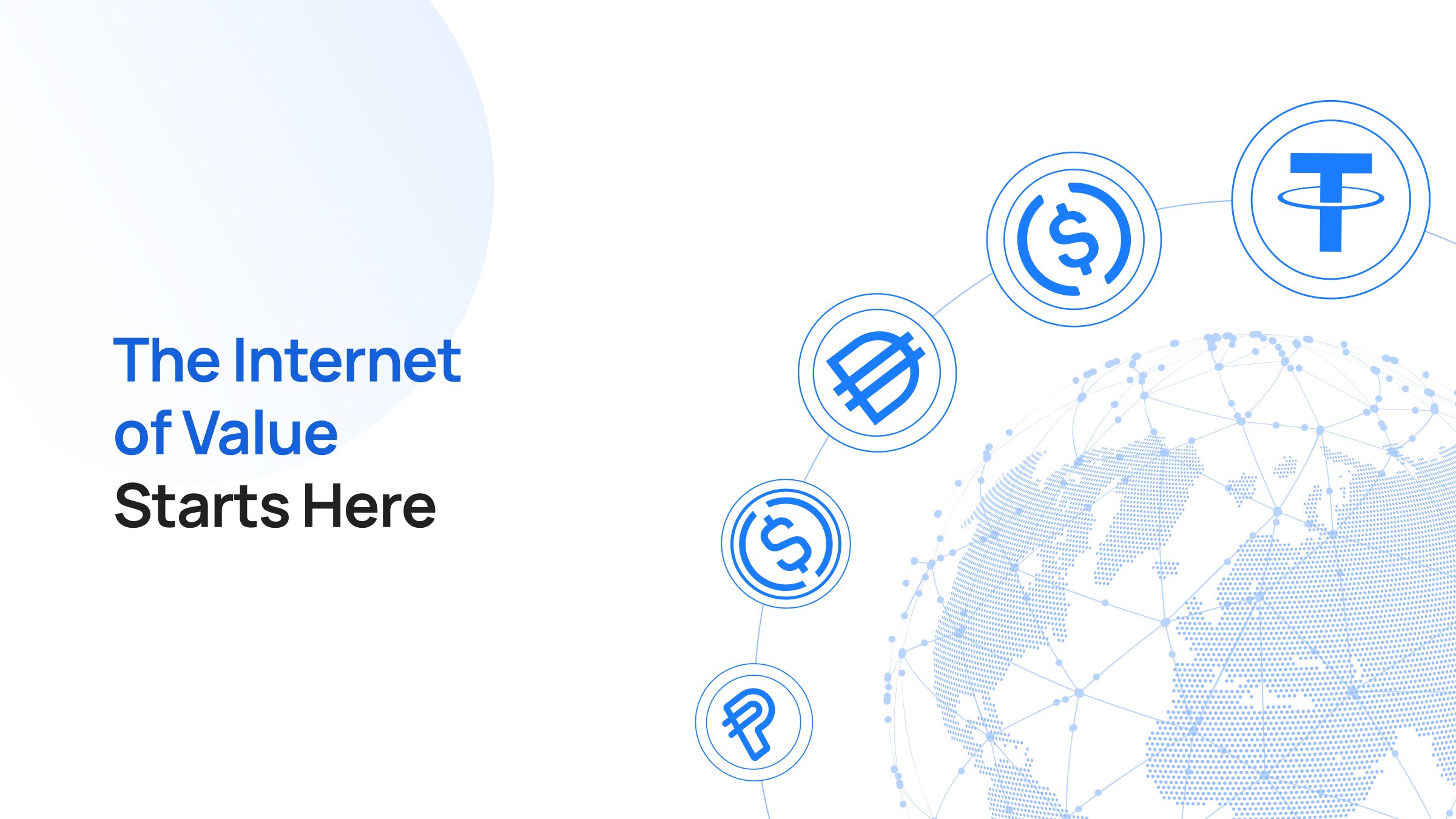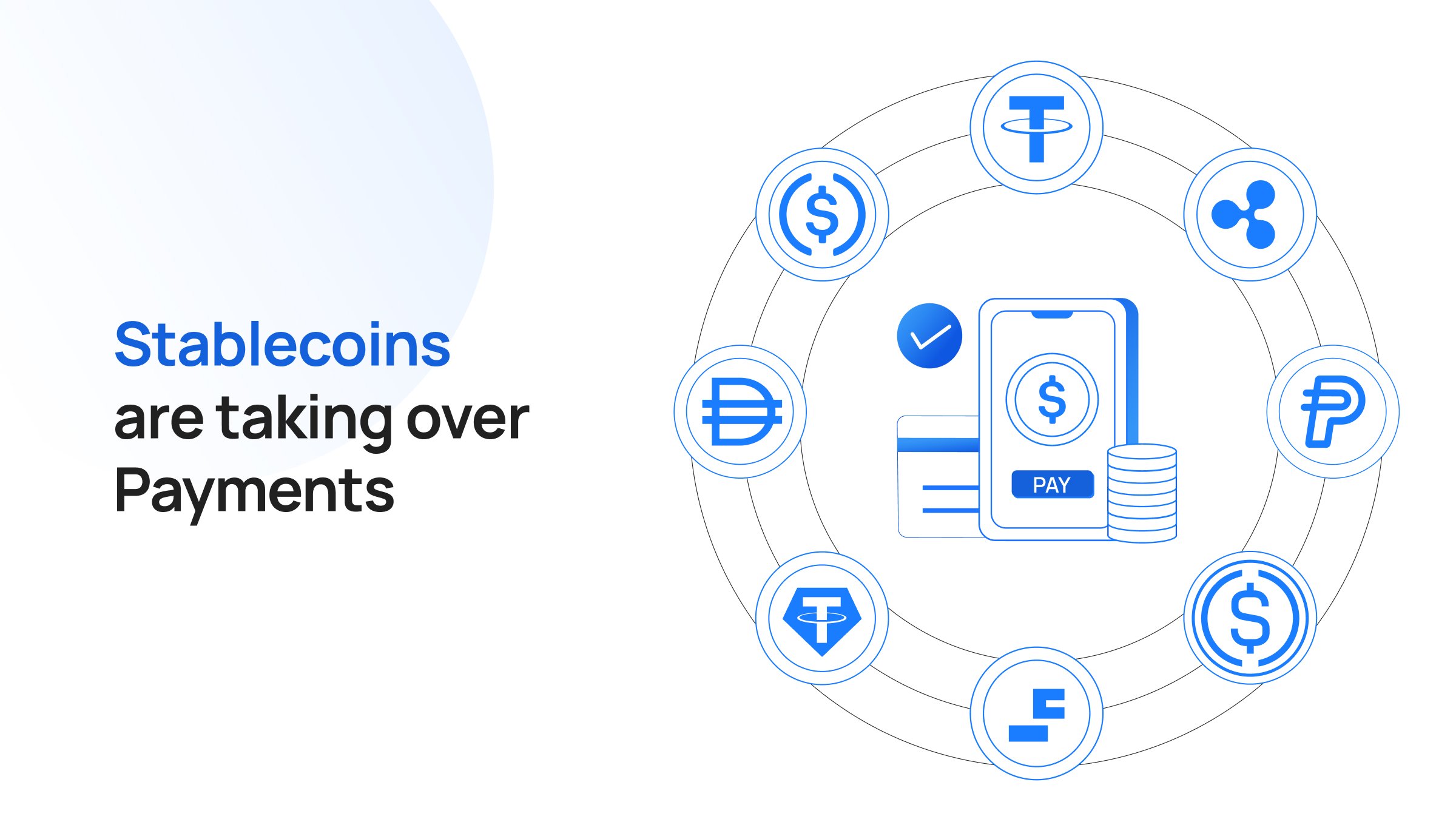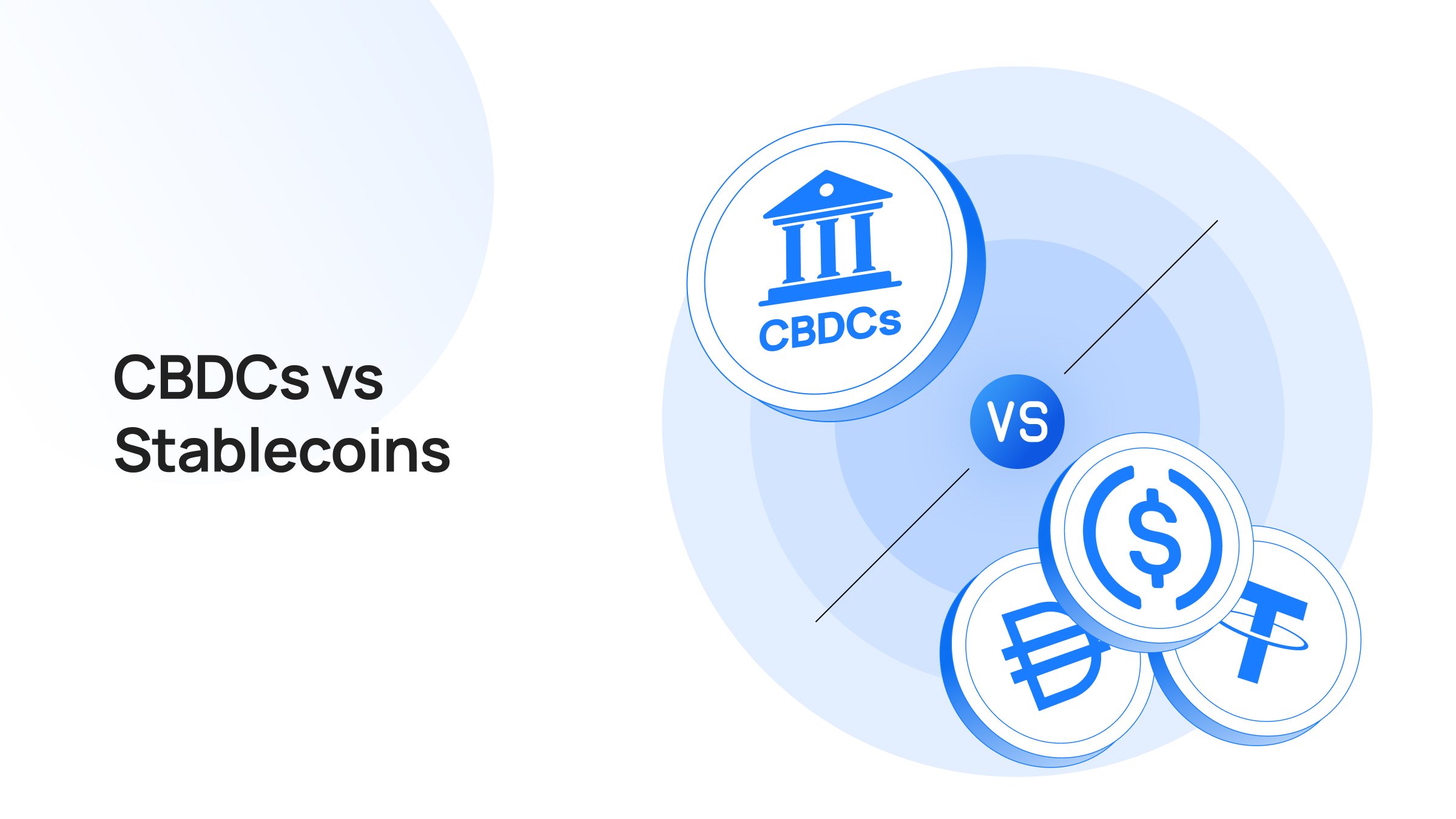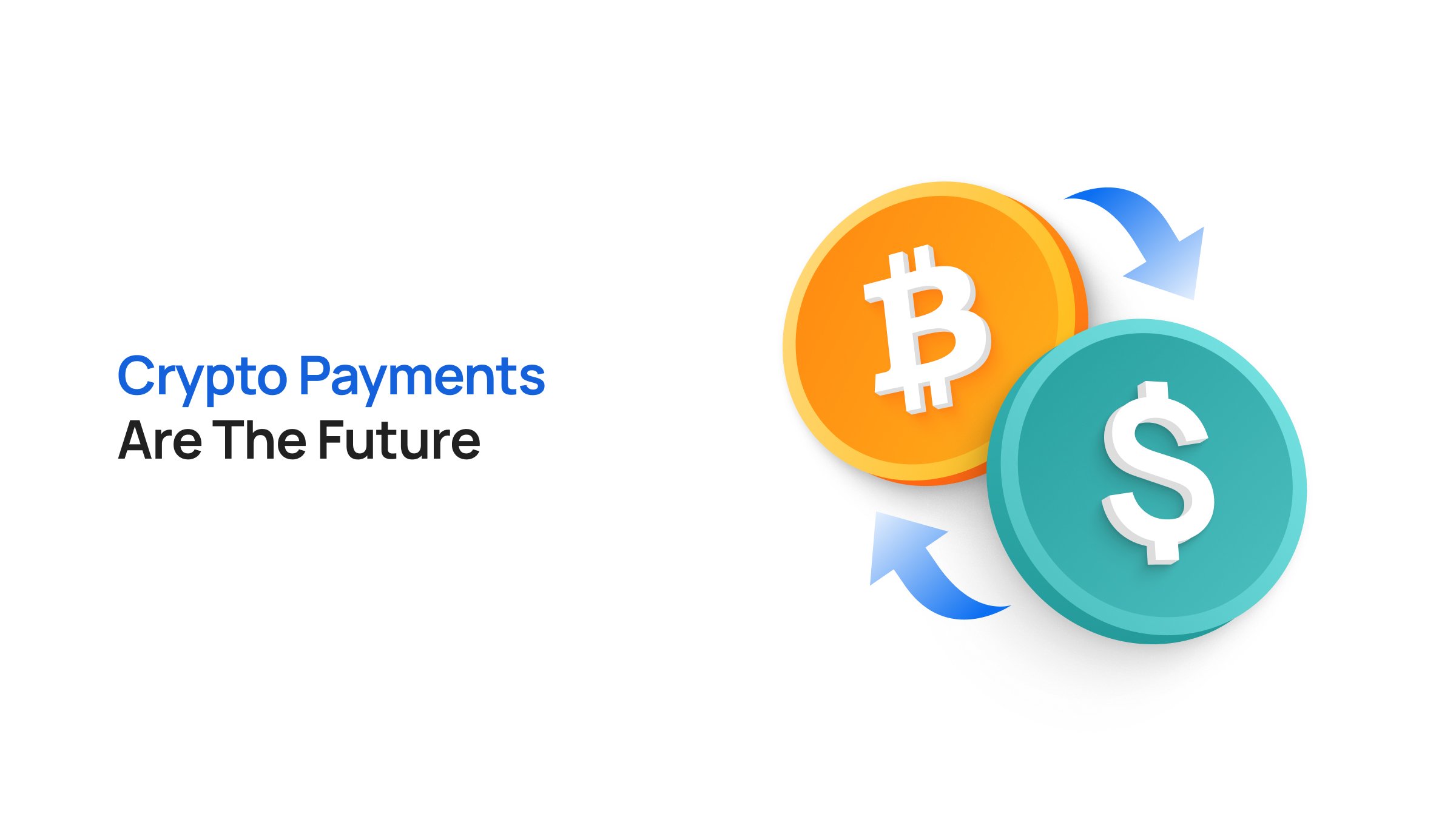Takeaways
- Money is shifting from batch-based movement to real time settlement through crypto rails.
- Programmable payments automate workflows like revenue splits, invoice settlement, payroll, and tax reporting.
- Major players like Visa, PayPal, Coinbase, Circle, Fiserv, and Zelle are already piloting or deploying stablecoin-based payments.
- Businesses value stablecoin rails for instant liquidity, lower FX friction, predictable fees, and faster reconciliation.
- Transak solves these pain points through global compliance, easy on/off ramps, robust liquidity, simple developer tooling, and familiar checkout flows.
The world is moving information at lightspeed. But money, not so much. For decades, money has been moving in bursts of batch settlements with limited time-windows and many intermediaries. That was sensible in an analogue world, but not anymore.
Now, value, too, can move at lightspeed.
Stablecoins, tokenised deposits, and on-chain identity are converging into what policymakers and technologists alike are calling the Internet of Value. Payment giants and fintechs are already experimenting with programmable settlement, cross-chain liquidity, and compliance baked into the transaction layer.
The world is moving toward an always-on economy, and crypto payment processors, like Transak, are powering the pipes that make it possible.
From Internet of Information to Internet of Value
The internet solved the movement of information at scale. Finance is now undergoing the same transformation.
In the legacy system, money travels through correspondent banks, clearinghouses, and settlement agents before reaching the final receiver. In the Internet of Value, those layers compress into a unified environment where value moves the way data packets move: instantly, automatically, and globally.
The Bank for International Settlements calls this direction a unified ledger. It envisions a shared programmable environment where stablecoins, tokenised assets, CBDCs, and bank deposits coexist and settle with embedded compliance logic. Instead of value hopping between disconnected ledgers, everything settles within a common infrastructure.
This unlocks a world where payments, identity, and rules flow together.
The Building Blocks of the Internet of Value
1. Stablecoins as the Settlement Fabric
Stablecoins have evolved into the de facto settlement layer for on-chain commerce.
Stablecoins, today, facilitate trillions in annual transaction volume. Merchants use them for real time settlement. Global teams use them for cross-border payroll. Treasuries use them for liquidity management.
Visa research shows that more than $670 billion worth of on-chain loans have originated using stablecoin collateral, signaling that stablecoin liquidity is becoming part of mainstream financial plumbing.
Also Read: 10 Incredible Stablecoin Use Cases Beyond Trading in 2025
2. Interoperability for Value Without Borders
In legacy finance, value crosses borders through slow and expensive FX corridors. On-chain, tokenized value moves across networks like data packets.
Crypto payment processors already route transactions across chains to select the fastest and lowest cost path. Visa demonstrated this using USDC on Ethereum and Solana to settle between issuers and acquirers without involving multiple intermediaries.
The future belongs to multi-chain liquidity where merchants, banks, and users interact over shared pools of liquidity, regardless of geography.
3. Digital Identity and Embedded Compliance
A universal Internet of Value demands trust and traceability without sacrificing user privacy. This is where digital identity frameworks and embedded compliance come in. Regulators like the European Banking Authority (under MiCA) and U.S. policymakers via the GENIUS Act are creating pathways for programmable KYC and AML enforcement.
Crypto payment processors are already aligning identity data travels alongside value transfers through secure verifiable credentials. Automatic compliance means a transfer can meet travel rules and AML standards without manual review.
4. Programmable Payments That Automate Entire Workflows
Traditional payment gateways move money. But, crypto-native infrastructure executes logic.
A single stablecoin transfer can:
- Split revenue across partners
- Release funds only on delivery
- Stream payroll in real time
- Trigger automated tax reporting
- Settle invoices the moment goods are verified
This turns payments into infrastructure rather than overhead. Businesses gain automation that removes entire layers of operational friction.
The Internet of Value Is Being Built Today
The future Internet of Value is not futuristic. Rather, it’s forming around us.
- Visa is running multiple pilots for on-chain settlement using USDC and tokenised deposits.
- Coinbase launched Coinbase Payments in 2025, enabling merchants to accept stablecoin payments with automatic fiat conversion.
- PayPal’s PYUSD is live across major merchant networks, and Fiserv is embedding stablecoin settlement into its acquiring stack.
- Circle is partnering with banks to enable programmable cross-border remittance flows. The company also launched Circle Payments Network.
- Zelle is evaluating stablecoin corridors to expand its trillion-dollar peer payment network internationally.
All these developments aren’t isolated examples but components of the same shift.
Why Businesses Are Paying Attention
CFOs increasingly view stablecoin rails as a financial advantage rather than a crypto experiment.
They offer:
- Instant liquidity instead of multi-day settlement cycles
- Lower FX friction for global transactions
- Transparent, predictable fee structures
- Automated reconciliation and reduced operational overhead
- Fewer accounting errors and faster closing cycles
Also Read: 7 Reasons Stablecoins Are Becoming The Currency of Regulated Businesses
Visa’s recent research shows that stablecoins also reduce working capital lockup and unlock new lending models through on-chain liquidity pools.
Challenges and Guardrails
Crypto payment processors are unlocking a new value layer, but the path is not frictionless. Several practical challenges still shape how fast the ecosystem can scale.
Regulation remains uneven across regions. Every country interprets digital assets differently, which forces processors to maintain complex compliance stacks and navigate shifting rules. It slows expansion and increases cost.
Liquidity is not uniformly distributed. Some chains and corridors have deep pools while others remain thin. This affects settlement reliability, routing efficiency, and overall user experience.
Stablecoin quality varies. Not all issuers operate with the same transparency or regulatory oversight. Processors must evaluate counterparty risk carefully because their rails depend on stable, well-managed assets.
User experience has gaps. Blockchains are abstracted, but onboarding still involves identity checks, crypto concepts, and payment methods that feel unfamiliar in some regions.
Fraud, scams, and chargebacks are real. Operating at the intersection of fiat and crypto introduces risk on both sides. Strong risk engines and monitoring systems are essential.
Technical fragmentation is still a factor. Chains have different standards, settlement models, and integration patterns. Even with abstractions, processors must maintain heavy infrastructure to keep everything working smoothly.
Also Read: Breaking Down Compliance Challenges In Stablecoin Transactions
How Transak Helps Power the Internet of Value
Transak removes the hardest parts of moving money across chains and borders. Instead of building a full payments stack from scratch, businesses integrate once and get global coverage with reliable compliance, liquidity, and user experience.
Global compliance handled for you
Transak maintains regional licenses, automated KYC, and risk monitoring so platforms can operate across multiple markets without managing local regulations.
Easy on-ramps and off-ramps worldwide
Users can pay or cash out through cards, bank transfers, UPI, Apple Pay, Google Pay, and other local methods. This brings everyday familiarity to crypto payments.
Reliable liquidity across chains
Transak aggregates liquidity and supports major stablecoins and networks. This improves pricing and ensures predictable settlement for users and merchants.
Developer friendly integration
Simple APIs and SDKs let apps embed crypto payments in minutes, without backend complexity or ongoing maintenance.
Familiar checkout experience
Users interact through clean flows that hide wallet addresses and technical steps, making crypto feel as easy as any online payment.
Conclusion
The internet of value is finally becoming real, and crypto payment processors are the ones turning it on. They hide the blockchain complexity, connect banks and wallets behind the scenes, and let money move online with the same ease as information.
This shift goes far beyond crypto. It is reshaping remittances, e-commerce, gaming, creator payouts, and global B2B flows. One integration now gives businesses instant access to global liquidity and real time settlement.






